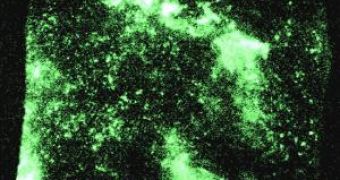Mechanoluminescence is the process of light generation through mechanical forces and it usually happens in crystalline structures, such as sugar or quartz. It can be produced through ultrasound, caused by stress that results in the formation of fractures or simply by rubbing, grinding or cleaving a solid.
Sir Francis Bacon first described it in 1605, and it's actually a good party trick, too: "You may, when in the dark frighten simple people only by chewing lumps of sugar, and, in the meantime, keeping your mouth open, which will appear to them as if full of fire," Father Giambattista Beccaria wrote in "A Treatise Upon Artificial Electricity," in 1753.
The mechanism that produces light was thought to be fully understood by now and it was considered the generation of opposite charges along the fracture plane of an asymmetrical or impure crystal. When the charges recombine the surrounding gas is ionized and emits light.
But, with the help of a new technique called the sonication of crystal slurries, University of Illinois chemistry professor Kenneth Suslick and graduate student Nathan Eddingsaas reported producing an impressive and much more intense mechanoluminescence, with some unusual reactions and energy emissions.
Sonication is the use of sound energy to agitate particles or other substances, causes high intensity collisions of crystal particles in liquid slurries and the mechanoluminescence produced with this technique is an order of magnitude brighter than that produced by grinding.
They found that the emission spectrum was more intense by a thousand times than in the case of simple grinding, producing emission lines never previously reported in such an event.
"When oxygen is present, chemical reactions take place that are similar to those that occur in the production of diamond films using an electrical discharge," Suslick said. "The intense mechanoluminescence and chemical reactions produced by ultrasound give us a better understanding of mechanoluminescence, mechanochemistry and the effect of ultrasound on solids within a liquid."
Although it has no practical applications, except for the scaring-people-to-death part, it is still an impressive new find about something everybody thought they understood.

 14 DAY TRIAL //
14 DAY TRIAL //